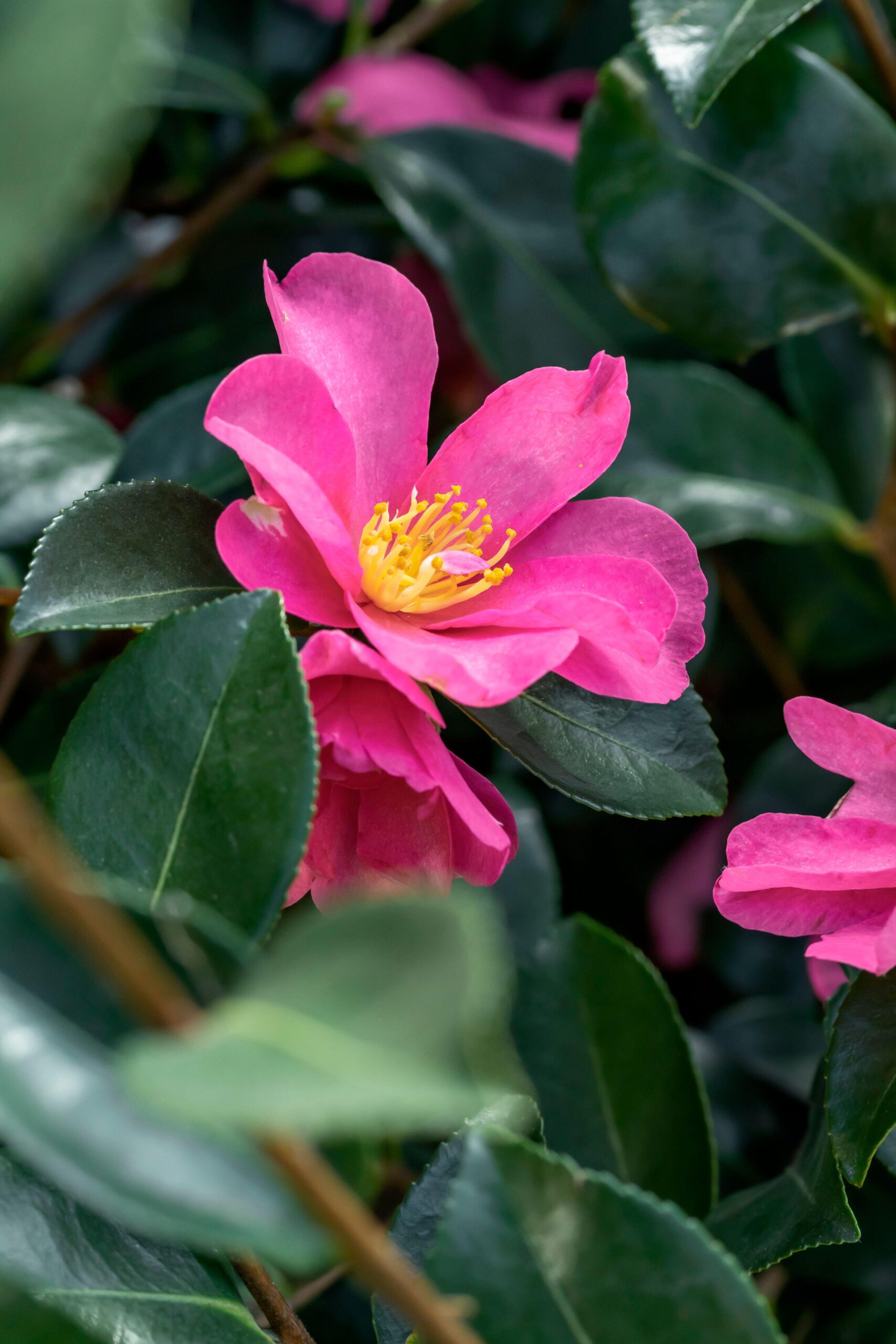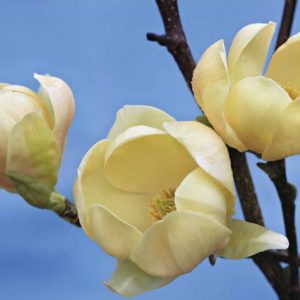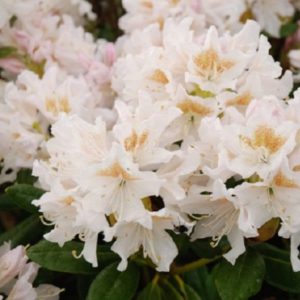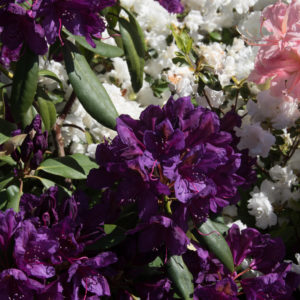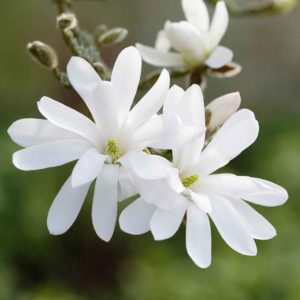Camellia Sasanqua Hiryu
€25.00
Description
Quick Facts
Common Name: Autumn-flowering Camellia ‘Hiryu’
Botanical Name: Camellia sasanqua ‘Hiryu’
Family: Theaceae
Origin: Japan
Flower Colour: Deep crimson-red, semi-double blooms
Flowering Period: October to December
Foliage: Evergreen, glossy dark green leaves
Mature Height: 2–3 metres
Mature Spread: 1.5–2 metres
Growth Rate: Moderate
Aspect: Partial shade to full sun (with shelter from harsh winds)
Soil Type: Acidic, well-drained, humus-rich soil
Hardiness: Hardy in most Irish gardens; benefits from shelter in colder areas
Uses: Specimen shrub, wall shrub, container planting, hedging, woodland garden
Description
Camellia sasanqua ‘Hiryu’ is a treasure for the Irish garden, offering a spectacular display of deep red, semi-double flowers from mid-autumn through early winter. Unlike its spring-flowering cousins (Camellia japonica), this sasanqua variety blooms when little else dares, transforming quiet corners into vibrant focal points. The flowers, measuring 6–8cm across, feature layers of crimson petals surrounding a central boss of golden stamens—a striking contrast that catches the eye even on the greyest November day.
The plant’s evergreen foliage is equally appealing, with small, glossy leaves that provide year-round structure and a handsome backdrop to the seasonal blooms. ‘Hiryu’ has a naturally upright, bushy habit, making it ideal for training against walls or fences where it can be admired up close. It’s also perfectly suited to container cultivation, allowing those with smaller gardens or patios to enjoy its autumn splendour.
This camellia is surprisingly adaptable for Irish conditions. While it prefers acidic soil (as do all camellias), it tolerates a range of garden situations provided the soil is well-drained and enriched with organic matter. A sheltered position is ideal—morning sun is welcome, but protection from harsh winds and the hottest midday rays will keep the foliage and flowers looking their best.
Caragh Garden Notebook:
Care & Cultivation
Planting Plant Camellia sasanqua ‘Hiryu’ in spring or early autumn to allow roots to establish before flowering. Choose a sheltered spot with dappled shade or morning sun—avoid positions that receive intense afternoon sun or are exposed to cold, drying winds. The soil must be acidic (pH 5.5–6.5); if your garden soil is neutral or alkaline, grow ‘Hiryu’ in a large container filled with ericaceous compost.
Dig a planting hole twice the width of the root ball but no deeper—camellias dislike being planted too deeply. Mix plenty of well-rotted compost or leaf mould into the soil to improve drainage and fertility. Position the plant so the top of the root ball is level with the surrounding soil, backfill, firm gently, and water thoroughly. Apply a 5–7cm mulch of bark chips or leaf mould around the base, keeping it clear of the stem.
Watering Water regularly during the first growing season to help establish a strong root system. Once established, ‘Hiryu’ is reasonably drought-tolerant but will perform best with consistent moisture, especially during bud formation in late summer and early autumn. Water during dry spells, particularly if grown in a container. Use rainwater if possible, as camellias prefer slightly acidic water.
Feeding Feed in early spring (March) with a slow-release ericaceous fertiliser or a liquid feed formulated for acid-loving plants. Avoid high-nitrogen feeds, which encourage leafy growth at the expense of flowers. A second light feed in early summer can support bud development for the autumn display.
Pruning Camellia sasanqua ‘Hiryu’ requires minimal pruning. If needed, prune immediately after flowering (December or January) to shape the plant or remove any dead, damaged, or crossing branches. Avoid heavy pruning, as this can reduce the following season’s bloom. To encourage bushier growth, lightly tip-prune young plants.
Mulching Refresh the mulch layer each spring to suppress weeds, retain moisture, and gradually improve soil acidity as organic matter breaks down. Keep mulch away from the stem to prevent rot.
Pests & Diseases Generally trouble-free. Occasionally affected by scale insects or aphids; treat with horticultural soap if necessary. Yellowing leaves may indicate alkaline soil or nutrient deficiency—apply an ericaceous feed and mulch with acidic compost. Bud drop can occur due to irregular watering or sudden temperature changes; maintain consistent moisture levels during bud formation.
Companion Plants Pair ‘Hiryu’ with other acid-loving plants for a harmonious autumn and winter display. Consider planting alongside Pieris, Rhododendron, autumn-flowering Cyclamen hederifolium, Sarcococca (Christmas box) for winter fragrance, ornamental grasses such as Hakonechloa, and ferns like Dryopteris or Polystichum for textural contrast. Underplant with spring bulbs—Narcissus, Erythronium, or Anemone blanda—to extend seasonal interest.
Design Suggestions Train Camellia sasanqua ‘Hiryu’ as a wall shrub against a sheltered north- or west-facing wall, where its autumn blooms can be admired at eye level. Use it as a specimen plant in a woodland garden or shaded border, or grow in a large container on a patio or courtyard for a dramatic seasonal feature. Plant in groups for a bold display, or combine with evergreen shrubs and winter-flowering perennials to create a garden that defies the season.
Additional information
| Pot Size |
|---|

